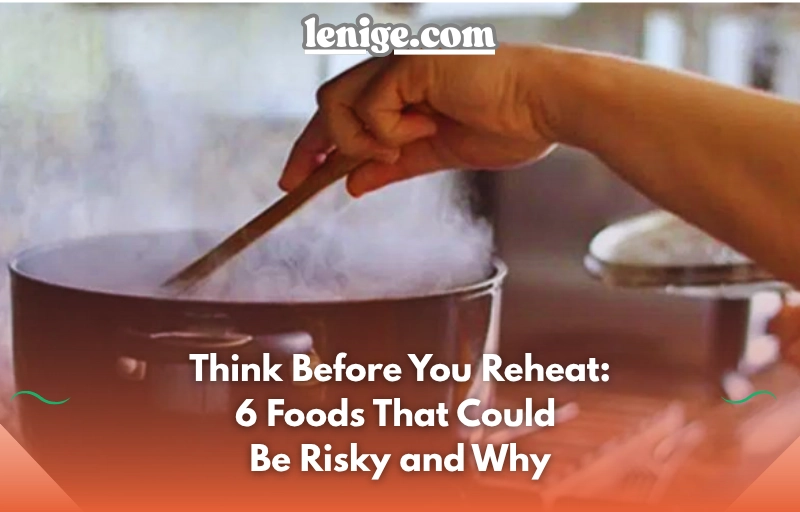Reheating leftovers might seem harmless, but certain foods can pose health risks or lose their quality when warmed up again. Here are six types of food you should be careful with when it comes to reheating — and the smart way to handle them.

1. Cooked Rice
Why It’s a Concern:
Rice may contain dormant spores of Bacillus cereus, a bacterium that can survive the cooking process. If rice is left out too long at room temperature, these spores can grow and release toxins, which reheating doesn’t destroy. The result? Possible foodborne illness that may cause symptoms such as nausea, vomiting, or diarrhea.
Safe Practice:
Cool rice quickly — ideally within one hour — by spreading it out on a flat surface. Store it in the fridge and use it within 24 hours. When reheating, ensure the food is thoroughly heated and steaming hot throughout.
2. Poultry (Especially Chicken)
Why It’s a Concern:
Chicken and other poultry are high in protein, which changes in structure when reheated. Improper reheating — especially at temperatures below 165°F (74°C) — increases the risk of foodborne illnesses like Salmonella. The texture can also suffer, turning rubbery or dry.
Safe Practice:
Cut chicken into smaller pieces for more even reheating, and make sure it’s hot in the center. Adding sauce or gravy can help prevent dryness. Avoid reheating more than once.
3. Cooked Potatoes
Why It’s a Concern:
Potatoes, particularly when wrapped in foil and allowed to cool slowly, can provide the perfect environment for Clostridium botulinum — the bacterium responsible for botulism. The danger increases if they sit out too long after cooking.
Safe Practice:
Cool potatoes quickly and refrigerate them right away. Reheat until they’re steaming hot. When in doubt, it’s safest to discard leftovers that have been left out for an extended period.
4. Leafy Greens and Some Root Vegetables (Spinach, Celery, Beetroot)
Why It’s a Concern:
These vegetables are naturally rich in nitrates, which are usually harmless. However, when reheated repeatedly or stored improperly, nitrates can convert into nitrites — and potentially into nitrosamines, which have been linked to health risks, especially in infants and young children.
Safe Practice:
Eat these vegetables fresh when possible. If you need to reheat them, do it just once and keep the process quick. For soups or stews, consider adding greens at the end rather than reheating them multiple times.
5. Eggs (Scrambled, Boiled, or Fried)
Why It’s a Concern:
Eggs can become rubbery and unappetizing when reheated. Worse, if they weren’t cooled and stored properly, reheating may not make them safe — Salmonella bacteria can develop if eggs are left out too long.
Safe Practice:
Eat eggs soon after cooking. If reheating, make sure they’re hot all the way through. For better texture and safety, use cold hard-boiled eggs in salads rather than warming them up.
6. Cooked Seafood
Why It’s a Concern:
Fish and shellfish are delicate and spoil quickly. Reheating can cause them to dry out or develop an unpleasant taste due to fat oxidation. Improper storage or reheating can also lead to bacterial growth and foodborne illness.
Safe Practice:
Seafood is often best enjoyed cold in dishes like salads or wraps. If you do reheat it, use gentle heat and avoid overcooking. Always ensure it reaches a safe internal temperature.
Bottom Line:
Not all leftovers are created equal. While reheating food can be a time-saver, doing it the wrong way may compromise taste or safety. When in doubt, remember: cool quickly, store smart, and reheat thoroughly — or skip reheating altogether for certain foods.
